In This Issue
- Senators Hack Worry
- Google 3X $500K Deals
- StackRox’s $14 Million
- Report from the CEO
- Senators Divided NN
- Combating Malware
- About Cloud Security
- US and Russia Cyber
- Generational Habits
- AT&T 5G Edge Comp
- Is This End of Cloud?
- Proximity Computing
- Changing Comp & Net
- Big Data Innovation
- Industrial IoT Market
- St Gov Cybersecurity
- Coming DCIA Events
Senators Worry Hackers Could Leave US in Dark
Excerpted from Sun Journal Report by Steve Collins
 With hackers taking aim at America’s electric grid, including nuclear plants, Maine’s US Senators Susan Collins (R-ME) and Angus King (I-ME) are pushing legislation they hope will keep the lights on.
With hackers taking aim at America’s electric grid, including nuclear plants, Maine’s US Senators Susan Collins (R-ME) and Angus King (I-ME) are pushing legislation they hope will keep the lights on.
“Time is running out” to improve the system, said King, ho serves on the Senate Intelligence Committee.
“It’s vital that we act now to bolster the grid’s cyber defenses or we risk a potentially catastrophic attack.”
“Over the past four years, we have had dozens – if not hundreds – of warnings of cyberattacks against critical infrastructure,” King said during a Congressional Hearing.
“What we’re looking at now is the longest windup for a punch in world history,” he said.
“We know it’s coming. We just don’t know where and when, and the risks are enormous.”
Collins is among the five Senators backing the Securing Energy Infrastructure Act introduced by King and Senator Jim Risch (R-ID).
The bill would set up a two-year pilot program to look for security vulnerabilities in the energy sector and to figure out how the Department of Energy can isolate the nation’s power grid from attacks.
The issue has taken on a new urgency with a revelation this month by the Department of Homeland Security and the Federal Bureau of Investigation. Read More
Google Triples $500K Cloud Deals
Excerpted from CloudTech Report by James Bourne
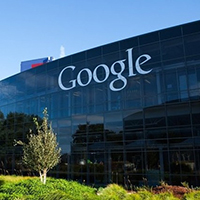 Google says it has tripled the number of its big cloud deals year over year as its parent company Alphabet announced revenues of $26 billion for the most recent quarter.
Google says it has tripled the number of its big cloud deals year over year as its parent company Alphabet announced revenues of $26 billion for the most recent quarter.
In a call with analysts, Google CEO Sundar Pichai – who it was also announced is joining the Alphabet Board of Directors – discussed the company’s ‘impressive’ cloud assets.
“Google Cloud Platform continues to experience impressive growth across products, sectors, and geographies and increasingly with large enterprise customers in regulated sectors,” he said, as transcribed by Seeking Alpha.
“To be more specific about our momentum with big customers, in Q2 the number of new deals we closed worth more than $0.5 million is three times what it was last year,” Pichai added.
This was about as specific as Pichai got, as Google puts cloud in its ‘other revenue’ bucket, alongside such products as the Google Play app store.
Google’s other revenues for Q217 were at $3.1 billion, up 42% from this time last year but seeing a very slight decrease from Q1 this year.
Compared with Amazon, which is now reporting its AWS revenues separately, and Microsoft, which does not give specifics but instead puts revenues for ‘intelligent cloud’, including Azure and server products, it is relatively nebulous. Read More
Cyber Startup StackRox Raises $14 Million
Excerpted from Reuters Report by Jim Finkle
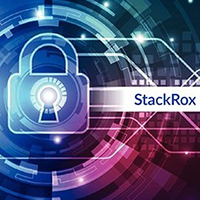 Cybersecurity startup StackRox said on Tuesday it has raised $14 million in a Series A funding round led by Sequoia Capital, providing the three-year old company with funds to use for product development and expansion of its sales team.
Cybersecurity startup StackRox said on Tuesday it has raised $14 million in a Series A funding round led by Sequoia Capital, providing the three-year old company with funds to use for product development and expansion of its sales team.
The Mountain View, CA based company also unveiled its first product: software for securing the contents of “containers,” which are stacks of software that make it more efficient to run multiple applications on top of a single operating system.
Chief Executive Sameer Bhalotra told Reuters that the company has several paying customers, including firms in the finance, media and technology industries as well as the US federal government.
Bhalotra, former White House Senior Director for Cybersecurity under former US President Barack Obama, declined to say how many customers are using the software.
Containers (e.g., Docker) are the new currency of business agility and efficiency for the world’s most innovative enterprises.
A 451 Research study of enterprises found that 52% of organizations using containers are running them in production.
However, this yields a new, rapidly-changing type of attack surface that cannot be secured with traditional enterprise security solutions (e.g., perimeter defense products); they do not see activity within container environments. Read More
Report from DCIA CEO Marty Lafferty

This week, US Senators Mike Lee (R-UT) and Patrick Leahy (D-VT) introduced the ECPA Modernization Act of 2017, a bill designed to modernize the privacy laws that protect the digital communications of American citizens.
The measure is more comprehensive than previous versions and would fundamentally reform the existing and outdated Electronic Communications Privacy Act (ECPA).
New privacy provisions include: a warrant requirement for law enforcement access to all digital communications such as email held by third parties, a warrant requirement for access to location information, new limits on metadata collection, and new freedoms to allow companies to notify their users when searches of their communications occur.
The DCIA has participated as a member of the Digital Due Process coalition spearheaded by the Center for Democracy & Technology (CDT), which has led advocacy for major ECPA reform to protect privacy in the digital age, and strongly supports this bipartisan legislation.
The new privacy bill ensures that citizens can fully realize their Fourth Amendment rights in the digital age, and will help spur global advancement of the distributed computing industry.
ECPA, the law that would be updated as a result of the bill, was drafted more than 30 years ago, and did not anticipate the sweeping technological change that has occurred since then.
The ECPA Modernization Act of 2017 has strong bipartisan support, and can benefit from your vocal support at this time in the US Senate.
Share wisely, and take care.
Senators Divided Over Net Neutrality Rollback
Excerpted from Broadcasting & Cable Report by John Eggerton
 The impact of Title II on broadband investment was a hot topic of conversation, and dispute, at the Senate Commerce Committee nomination hearing for FCC Chairman Ajit Pai and Commission seats for Jessica Rosenworcel and Brendan Carr.
The impact of Title II on broadband investment was a hot topic of conversation, and dispute, at the Senate Commerce Committee nomination hearing for FCC Chairman Ajit Pai and Commission seats for Jessica Rosenworcel and Brendan Carr.
Senator Mike Lee (R-UT) cited stats, which have been proffered by internet service providers (ISPs) that investment has gone down.
He also took issue with a New York Times story that investment had gone up since the 2015 Open Internet order reclassified ISPs under common carrier regs.
He said that increase included foreign investment, some of which he said was spurred by the Title II disincentive to invest in the US, and that there was evidence that US infrastructure investment had declined precipitously.
On the other side was Senator Ed Markey (D-MA) who said that almost half of the venture capital funds, or about $25 billion, invested since 2015 was in internet-related businesses, with broadband providers investing $87 billion, the highest CapEx rate in a decade.
Markey said investment and job creation are high, so there is no problem that rolling back Title II or reviewing net neutrality rules would fix… Read More
Combating the Rising Threat of Cloud Malware
Excerpted from CloudTech Report by Anurag Kahol
 Enterprise cloud adoption rates continue to rise at unprecedented rates as more businesses realize the benefits these services can bring.
Enterprise cloud adoption rates continue to rise at unprecedented rates as more businesses realize the benefits these services can bring.
However, perhaps predictably, this explosive growth has also given rise to a host of new cyber threats as criminals look to capitalize on changing business habits for their own ends.
At the top of the list are two familiar threats; malware and ransomware, which unfortunately now have the potential to compromise more data than ever before, thanks to the interconnected nature of the cloud.
Despite this, a worryingly low number of cloud service providers are yet to offer dedicated protection against malware in the cloud.
While Office 365, G Suite, and Azure have the ability to identify common ‘known’ malware, when it comes to defending against zero-day attacks, most come up short.
Today, there is a shortage of proactive cloud malware solutions, even amongst industry leading vendors… Read More
5 Ways to Think About Cloud Security
Excerpted from CSO Report by Tim Prendergast
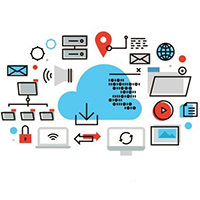 Cloud computing promises significant costs savings and more streamlined management of mission-critical information technology, data processing and storage needs.
Cloud computing promises significant costs savings and more streamlined management of mission-critical information technology, data processing and storage needs.
But is it secure?
Vibrant Credit Union (VCU), a Midwestern-based full service financial services credit union that offers both online services and storefront branches, continues to grow their footprint in the cloud.
As their needs grow, so does their emphasis on security.
Steve McAtee, Vibrant’s CIO, has been tasked with migrating securely to the cloud without inflating the credit union’s IT budget.
Like most well-managed organizations, Vibrant relentlessly pursues a strategy of doing more without increasing costs, and avoiding any compromise in its security posture.
McAtee has found ways to improve his company’s security capabilities by continuously monitoring and automating its cloud security… Read More
US and Russia Cyber Pact Road Rules
Excerpted from Washington Times Report by Andrew Blake
 President Trump’s top cybersecurity advisor has defended the former’s decision to discuss forging an “impenetrable” cybersecurity unit with his Russian counterpart last week, but said Washington and Moscow must come to an understanding before pursuing any sort of partnership.
President Trump’s top cybersecurity advisor has defended the former’s decision to discuss forging an “impenetrable” cybersecurity unit with his Russian counterpart last week, but said Washington and Moscow must come to an understanding before pursuing any sort of partnership.
“President Trump, I believe, is right in his continued assertion that even with countries with whom we have friction or disagreements, we have a responsibility on behalf of the American people to continue to have conversations to the extent that they can yield a positive result,” White House Homeland Security Advisor Tom Bossert told reporters abroad Air Force One on Friday.
Before forging a partnership, however, the US and Russia must “have a conversation about the rules of the road in cyberspace, norms, and expectations,” Mr. Bossert said.
“I’d like those same rules, norms and expectations to be part of our conversation as we discuss any potential future dialogue with the Russians in cybersecurity,” Mr. Bossert added, according to the White House’s transcription.
Mr. Bossert’s comments came in response to questions concerning Mr. Trump’s meeting with Russian President Vladimir Putin last week… Read More
Cybersecurity Habits Across Generations
Excerpted from Entrepreneur Report by Rose Leadem
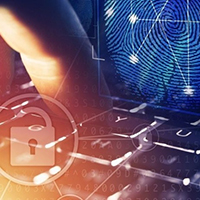 From baby boomers to millennials to gen Zers, different generations even have different habits when it comes to online security, as revealed by a survey of 1,000 Americans by password manager company LastPass.
From baby boomers to millennials to gen Zers, different generations even have different habits when it comes to online security, as revealed by a survey of 1,000 Americans by password manager company LastPass.
Gen Zers seem to be the least concerned when it comes to cybersecurity.
In fact, 41 percent don’t believe they are targets for hackers.
Because they seem to brush off the idea of getting hacked, they’re also not so concerned with putting too much energy into creating tricky passwords.
Nearly one-third of surveyed gen Zers don’t put much thought into their passwords, and a quarter admit to only using one or two different passwords for their various accounts.
To the contrary, millennials are one of the most concerned generations when it comes to online security.
Nearly three-quarters believe they are targets for hackers, so they go above and beyond when it comes to protecting themselves… Read More
AT&T Reinvents Cloud with 5G Edge Computing
Excerpted from TechRepublic Report by Conner Forrest
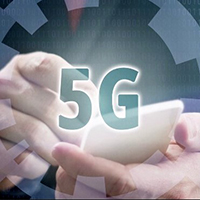 With new investments in edge computing, AT&T could set the stage for business investments in internet of things (IoT), virtual reality (VR), robotics, and more.
With new investments in edge computing, AT&T could set the stage for business investments in internet of things (IoT), virtual reality (VR), robotics, and more.
With continued investments in 5G and edge computing, AT&T said it is “reinventing the cloud” to better support next-generation technologies, according to a Tuesday press release.
The firm is also targeting “single-digit millisecond latency” to more efficiently provide access to these services.
Edge computing occurs when data is processed at the edge of a network, instead of relying on the cloud or an on-premises data center for processing power.
This can speed up data analysis, shrink network traffic, and lower latency, but AT&T Labs President and CTO Andre Fuetsch said he believes that 5G will take it even further.
“The capabilities of tomorrow’s 5G are the missing link that will make edge computing possible. And few companies have the sheer number of physical locations that AT&T has that are needed to solve the latency dilemma,” Fuetsch said… Read More
Is This the End of Cloud Computing?
Excerpted from Future Processing Blog by Marta Malek
 At the end of 2016, Peter Levine, a General Partner at Andreessen Horowitz provoked the public to discuss the future of cloud computing.
At the end of 2016, Peter Levine, a General Partner at Andreessen Horowitz provoked the public to discuss the future of cloud computing.
In short, his premise was that the development of the internet of things (IoT) devices and machine learning will soon make cloud computing services, as we know them, obsolete.
Why? Some IoT devices, based on machine learning, gather incredible amounts of data, so they already act like a little cloud.
The reason why they must work this way is simple – they ought to act on the spot, in real time, so they don’t really have time to send the data to the cloud and wait for the answer (Levine’s example portrayed self-driving cars that rely on quick reaction time).
Peter Levine thinks that edge computing is the future of data-storage – it is basically the exact thing we described above.
Smart devices, like autonomous cars, will become “tiny” clouds on their own, thanks to having the computing power of hundreds of PCs… Read More
What Is Proximity Computing?
Excerpted from IoTforAll Report by Hari Harikrishnan
 Edge computing is a means of processing data physically close to where the data is being produced, i.e., where the things and humans are – in the field area, homes, and remote offices.
Edge computing is a means of processing data physically close to where the data is being produced, i.e., where the things and humans are – in the field area, homes, and remote offices.
Since they don’t live in the cloud, we need to complement cloud computing with many forms of computing at the edge to architect internet of things (IoT) solutions.
Events in our world need a timely response either for good user experience (“changing TV channels”) or to avoid catastrophes (“gas line leak”).
As these events occur, we need to choreograph complex systems to Sense, Process, and Act (SPA).
The cost of SPA’ing is a function of local vs. remote processing costs, network connectivity costs and remote systems management costs.
Size and power aside, proximity computing balances the timelines of responding to an event with the cost of that response.
Legal restrictions on data traversing jurisdictions further drive the need for proximity computing… Read More
Changing Computing and Networking Forever
 There was a time when transoceanic travel was a fantasy, the mentioning of space travel could get you committed and the thought of 16GB of RAM in your computer was something only for the ultra-rich.
There was a time when transoceanic travel was a fantasy, the mentioning of space travel could get you committed and the thought of 16GB of RAM in your computer was something only for the ultra-rich.
But technology, like time, changes and every so often a breakthrough happens.
It’s almost that time again. Imagine a world where computers are millions of times as powerful as they are today.
Instead of gene mapping a person’s DNA to treat disease, a program capable of mapping down to the protein level could provide highly-targeted cancer therapy.
Or, perhaps a weather system model could predict the formation of a tornado, along with its specific path, with accuracy greatly surpassing anything possible today, providing far longer warning times and saving lives.
In a small but significant step toward that future, the Quantum Networking group at the Air Force Research Laboratory Information Directorate (RI) in Rome, NY trapped Yb+ ions on April 14, 2017.
This is the first ion-trapping demonstration at an in-house Department of Defense (DoD) research laboratory… Read More
Big Data Driving Technological Innovation
Excerpted from CIO Report by Gary Eastwood
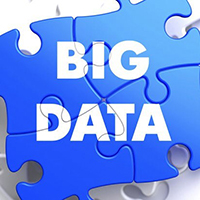 Big data analytics, or the collection and analysis of huge sums of data to discover underlying trends and patterns, is increasingly shaking the foundations of the business world.
Big data analytics, or the collection and analysis of huge sums of data to discover underlying trends and patterns, is increasingly shaking the foundations of the business world.
As the field continues to grow at an explosive rate, many innovators are asking themselves how they can exploit big data to optimize their businesses.
While businesses have analyzed data for decades, recent developments in computing have opened new doors and unleashed big data’s potential.
A report from SNS research details the breadth of big data’s impact; it’s now a $57 billion market, and is expected to continue to grow.
So how exactly is big data driving changes in the marketplace, and what does the future of this exciting industry hold?
Savvy firms are using big data to foster increased consumer engagement, target new audiences with their advertisements, and hone the efficiency of their operations… Read More
Industrial IoT Market 2017-2022
Excerpted from MarketWatch Report
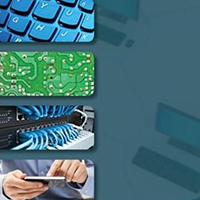 Interested or involved in the industrial internet of things (IoT) market in the next five years?
Interested or involved in the industrial internet of things (IoT) market in the next five years?
Visiongain has produced an in-depth market research report into Industrial Internet of Things (IoT) Market 2017-2022, forecasting the rapid growth of this market.
This report offers forecasts for specific industries, while profiles of leading national/regional markets offer insights into region-specific opportunities and developments.
Visiongain has estimated this market to be worth $228.4 billion in 2017.
The development of this market and industry interest in IoT continues, with Visiongain forecasting significant growth rates for this market.
This report covers forecasts for the market, as well as other factors that could affect the industrial IoT.
By also covering the following IIoT submarkets, the report gives readers a concise overview of the market: Aerospace/Defense, Healthcare, Automotive & Transportation, Energy & Utilities, Agriculture, Retail, Manufacturing, and Others… Read More
Governors Pledge to Improve Cybersecurity
Excerpted from Star Tribune Report by Erin Golden
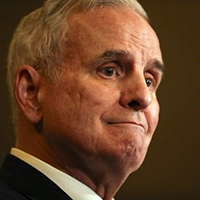 Minnesota state agencies fend off approximately 3 million cyberattacks daily, a constant barrage that explains why Governor Mark Dayton on Friday joined 37 other US governors in pledging to make cybersecurity a shared top priority.
Minnesota state agencies fend off approximately 3 million cyberattacks daily, a constant barrage that explains why Governor Mark Dayton on Friday joined 37 other US governors in pledging to make cybersecurity a shared top priority.
At a meeting of the National Governors Association in Providence, RI, Dayton signed on to “A Compact to Improve State Cybersecurity.”
The 38 governors, including those from Iowa and Wisconsin, agreed to develop or build upon statewide plans to combat cyberattacks against IT networks, and to protect both personal and government data stored on state systems.
Dayton, a DFLer, has called for more state funding for cybersecurity initiatives. He said Minnesota needs to build on work it has already started.
“I am proud that Minnesota has been a leader in cybersecurity, but we must do more,” he said.
“As these threats increase in volume and sophistication, we must invest in critical upgrades, technology, and talent to keep Minnesotans safe and secure online… Read More
Coming Events of Interest
Industry of Things World Europe — September 18th and 19th in Berlin, Germany. Join more than 1,000 high-level executives to rethink your technology and business strategy for scalable, secure, and efficient IoT.
IoT Solutions World Congress — October 3rd through 5th in Barcelona, Spain. This event has grown enormously in no time and is an excellent barometer and source of information, inspiration, collaboration and transformation.
2017 Storage Visions Conference — October 16th in Milpitas, CA. “New Visions for Digital Storage” will bring together the vendors, end-users, researchers, and visionaries who will meet the growing demand for digital storage for all aspects of unstructured and lightly structured data.
INTRASECT— November 1st and 2nd in Washington, DC. The first conference of its kind to engage key stakeholders in a comprehensive and engaging examination of existing and future regulatory policy governing the usage of commercial autonomous vehicles.
Government Video Expo & National Drone Show — November 28th-30th in Washington, DC. The 22nd annual GVE will feature a full exhibit floor with numerous training options, free seminars, keynotes, networking opportunities, and five new educational pavilions.
Delivery of Things World 2018 — April 23rd and 24th in Berlin, Germany. Meet the most influential DevOps practitioners and experts and discuss what DevOps means for your business.
